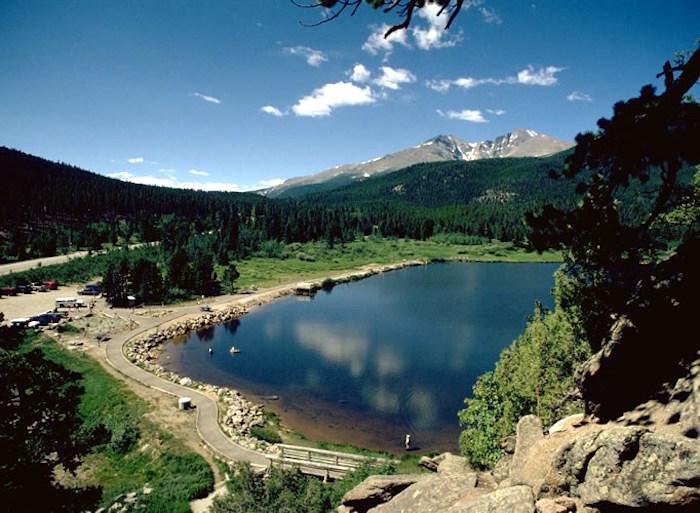
Lily Lake in Rocky Mountain National Park/NPS
A dead beaver recently found at the Lily Lake area in Rocky Mountain National Park has tested positive for tularemia, a bacterial disease that humans can contract.
Tularemia is a naturally occurring bacterial disease transmitted by infected insects and ticks to rabbits, hares, muskrats, beavers and other small rodents. Tularemia can also spread to humans and can cause serious clinical symptoms. People can help prevent infection by using insect repellent, washing hands, and giving wildlife their space. Never consume water that has not been treated or boiled.
In humans, tularemia can cause a wide range of symptoms, including fever and chills, joint pain, muscle aches and headaches, dry cough and chest pain and an open sore and swelling at the site of a tick bite or swollen lymph nodes. If someone becomes ill with any of these symptoms within two weeks of being in an affected area, they should seek medical attention and tell their doctor about possible exposure to tularemia. Tularemia can be treated successfully with antibiotics. For more information about tularemia visit www.cdc.gov/Tularemia/
Although tularemia is a native disease that occurs naturally, human impacts on the environment can affect wildlife habitats and promote the transmission and spread of diseases such as tularemia. By appreciating wildlife from a distance, we can help protect ourselves from tularemia.
Tularemia was also detected in the Lily Lake area in 2015.



Add comment